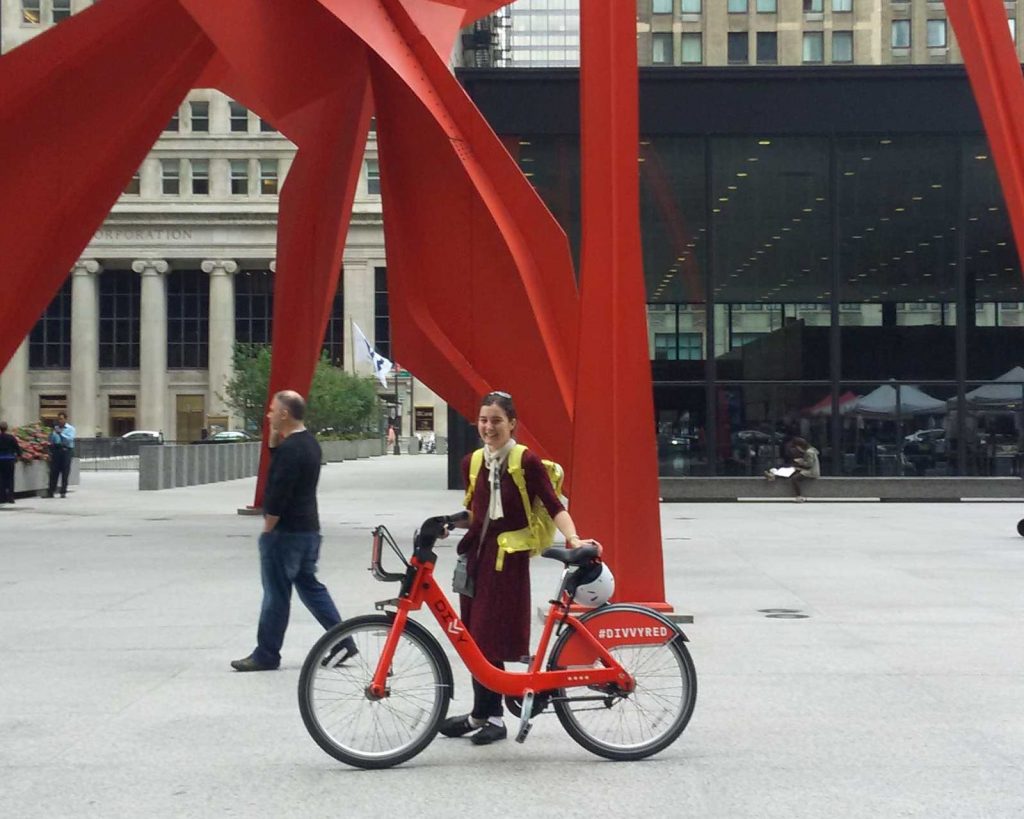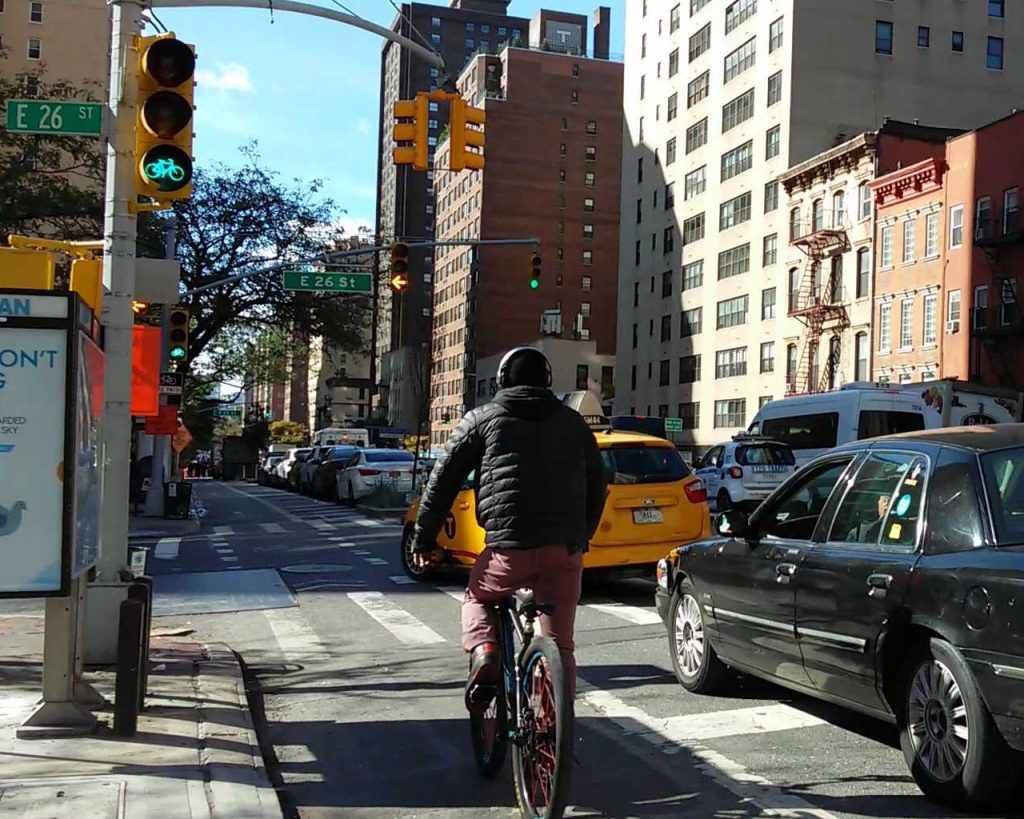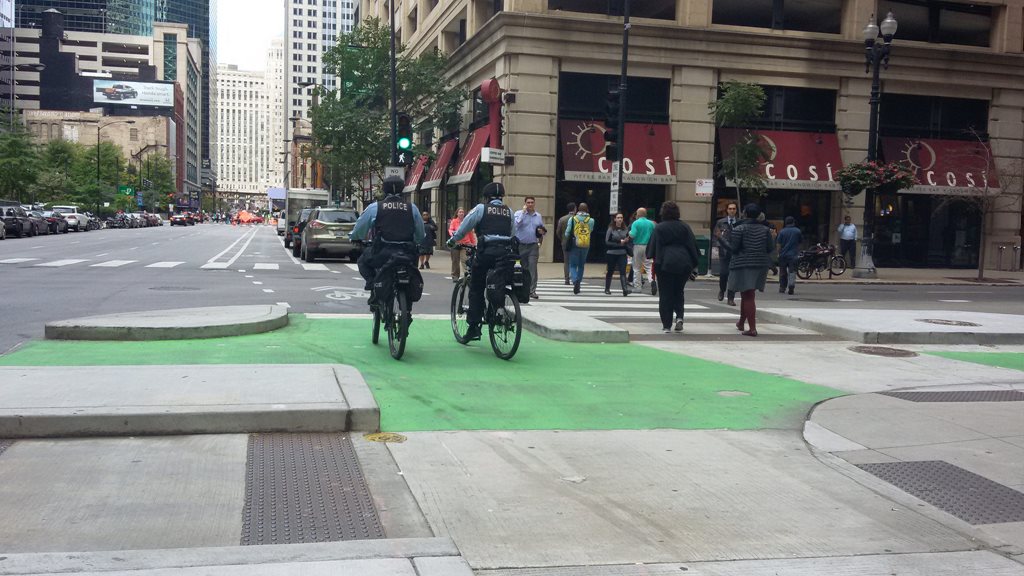One of my colleagues, Megan Fowler, has just returned from a five-week study tour of North American cities, courtesy of an IPENZ Transportation Group Study Award.

Megan’s focus during her tour was to look at how cycling is catered for at signalised intersections; as I’ve shown you previously, there are a growing interest in these issues in North America.

Of course, there was also opportunity to look at other interesting features such as protected bikeways, which are popping up across North America.

Megan visited seven different cities across the continent, meeting with various transport officials and looking at interesting cycling facilities. Along the way, she has been filing reports via a study tour blog, and it’s well worth having a read.

What can we learn from cycleway planning in the US?


A central bike lane looks like a cunning plan, away from parked cars so less clearances needed but how does work for cars trying to enter mid-block car parks -you turns? Would intersections be better (safer), worse or the same?
I suspect that this design option is very site specific, i.e you couldn’t do it everywhere. I know that something like this is being considered for the Major Cycleway running down Linwood Ave.
those flashing amber turning arrows for cars look good – could do with those along Tuam St rather than making bikes stop when there is no turning traffic
My understanding is the yellow flashing light is to "make the car look out for the cyclist" and we know how well that works.
Downside of having a green phase for bikes is having a red phase as well.
I do wish the green light for bikes had more green light in it – they can be a bit hard to see.